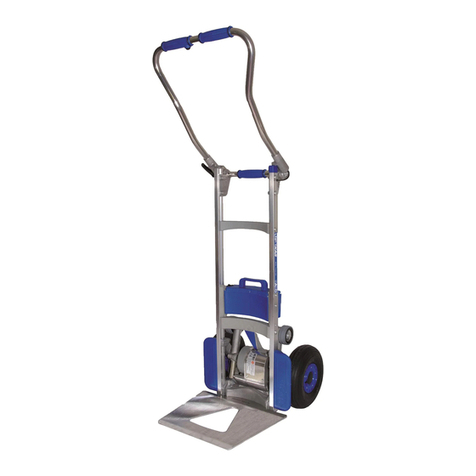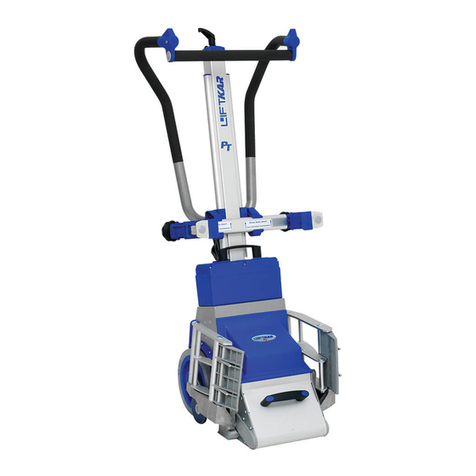
Page 6
4.1. System of GO NG DOWNSTA RS
(pictures from top to bottom)
Moving to a safe distance from the step margin -
(4-10 cm distance wheel shaft to step margin) then
STOP!
Actuate the switch (arrow forward).
The crank drive s stem with the small support wheels
moves forward and reaches over to the next step below.
As soon as LIFTKAR is lifting, the permanentl braked
support wheels pull the hand truck forward over the step
margin and LIFTKAR is descending under controlled
balance.
mportant:
1. Moving to 4 - 10 cm to the step margin and STOP!
2. As soon as LIFTKAR is lifting, let it go.
Do not pull back too strongl !
3. On winding stairs: LIFTCAR has to be turned a bit
on each step so that both wheels are stopped at
the same distance from the step margin.
General remark:
Alwa s tr to find the balance.
As soon as ou have this under control ou will see, how
eas it is to work with LIFTKAR.
4.2. System of GO NG UPSTA RS
(pictures from bottom to top)
Pull back to the step margin of the next step above. B
actuating the switch (arrow backward) the crank drive
with the support wheels is extending backward and is
lifting LIFTKAR to the next step above.
mportant:
1. Alwa s pull back to the step margin. On winding
stairs both wheels have to be pulled back to the
stap margin on each step. After short exercising
the switch could be pressed permanentl making it
possible to work permanentl and quickl .
2. Minimum t re pressure 2.5 bar.





























